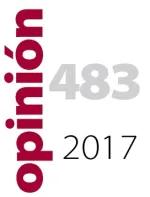OPEC Between a Rock and a Hard Place

In December 2016 oil prices rose from the mid $40s to the mid $50s after OPEC decided to cut production by 1.8 million barrels per day for the period of January to June 2017. The three largest producers of the group of oil exporters, Saudi Arabia, Iran and Iraq, overcame their differences. OPEC even succeeded in enlisting the participation of non-OPEC members such as Russia, which reduced production as well.
On May 25, the Vienna summit of OPEC managed to extend these production cuts until March 2018. The goal is to bring down global inventories to their five-year average, currently at 2.7 billion barrels, which experts regard as an indication of a balanced market. However, the Vienna meeting has also shown a certain powerlessness of the organization. It is only a pale shadow of its former self. It helped pushing up oil prices in the 1970s, but largely lost control of oil markets after a supply glut and the oil price slump of the mid-1980s. After oil prices plummeted in the wake of the Asian crisis at the end of the 1990s, the organization agreed to manage prices within a band of $22-28 in 2000. Yet this band was abandoned five years later during the oil price boom of the 2000s. This time OPEC lost control of oil markets on the way up. Asian demand growth outstripped supply growth and Saudi Arabia’s spare capacity of heavy sour crude was unable to moderate prices. It was not sufficient and its product specifications did not meet refinery demand for light sweet crude. Today the situation is yet different again. OPEC has lost a great deal of control on the way down. The unconventional oil revolution in the US and sluggish demand growth in the wake of the global financial crisis weigh on prices.
Saudi Arabia holds by far the largest oil production spare capacity. It is the global “swing producer” - the only country that can throw large amounts of crude on the market in the case of supply disruptions elsewhere. When the current oil price slump set in during the second half of 2014 it initially refused to cut production to stabilize prices. It was heeding the lesson of the early 1980s when it continuously lost market share in an ultimately futile effort to stabilize prices via production cuts. Other OPEC countries produced flat out and were free riding on the Saudi price support. When Saudi Arabia changed course in late 1985 and opened up the spigots to regain market share, oil prices plummeted.
This time Saudi Arabia has been anxious to maintain market share right from the beginning. It raised production in 2014 in an attempt to crowd out high cost producers, targeting drilling in the Arctic and deep seas, but above all US tight oil producers from shale formations who increased US production by almost 4 million barrels per day between 2011 and 2015. They felt the pain of the Saudi market share strategy, but adjusted and managed to reduce their costs. The kind of US production decline that Saudi Arabia had hoped for never happened. After some reductions, US production edged up again. In late 2016 Saudi Arabia threw in the towel. It changed tack again by agreeing to OPEC production cuts to manage prices.
These cuts led to a resurgence of oil prices beyond $50 and provided important relief to the emptying coffers of OPEC producers. In April 2017 Saudi Arabia reversed some of the public sector pay cuts it had instated in 2016 in an attempt to stop its fiscal hemorrhaging. However, ahead of the Vienna meeting oil prices softened again in April and only moved back to the mid-$50s after OPEC assurances over an extension of production cuts. Internal consensus was not easy to achieve, given resistance by some members such as Iraq, Nigeria and Libya who are in dire need of revenues.
This leaves OPEC countries in a difficult situation. They have shown ability to stabilize prices at current levels, have managed to forge political consensus among member states and extended cooperation with non-members such as Russia. Yet current oil prices are not high enough to cover their budgetary needs. Threshold prices for a balanced budget in 2016 hovered between $48 for Kuwait, $55 for Iran and $80 for Saudi Arabia according to the IMF. Venezuela and Nigeria were yet farther away from a balanced budget and so is Russia, which would need a threshold price of $72 in 2017 to balance its budget according to rating agency Fitch.
This means yet more austerity for oil exporters after an oil boom that lasted a decade. The need for economic diversification will remain. Saudi Arabia has envisaged such diversification in its Saudi 2030 strategy, but implementation will prove difficult if not elusive. Meanwhile US producers have been remarkably resilient by cutting costs. Once prices rise beyond $50, more and more US tight oil production re-enters the market. The market reaction to OPEC’s production cut extension on May 25 has been muted. Prices fell. Traders were disappointed that OPEC did not increase the size of the cuts or extend them even longer. Oil prices are unlikely to reach levels required to cover public spending in most oil exporting countries anytime soon. In the middle and long run this might get worse because of growing electric mobility. Significant progress in battery technology in conjunction with steep cost declines of renewable energies such as solar, could lead to demand destruction and sap oil prices sustainably. The challenges for OPEC producers will be daunting; at the same time renewable energy transitions could prove an important aspect of their vaunted diversification efforts.
Keywords: Oil, Price, Production, Export, Member Countries, OPEC, Saudi Arabia, Iran, Iraq, Russia.
D.L.: B-8439-2012